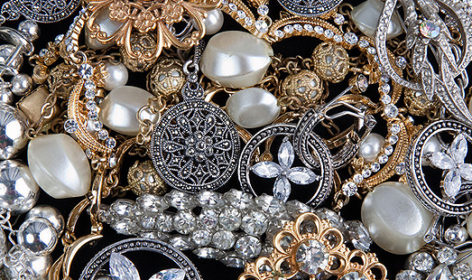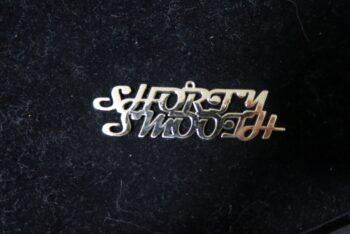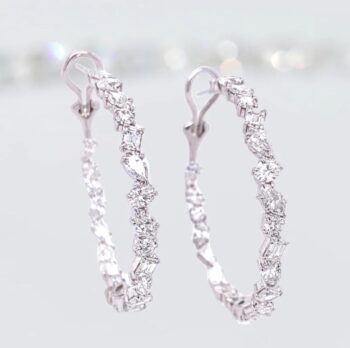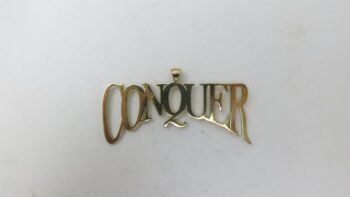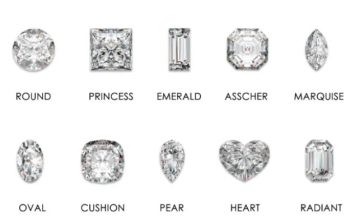Running from the early 1700’s until the 1950’s, there were six distinct types of Antique Jewelry. While some of the eras overlapped each other, there is a generally accepted delineation of these 6 eras. They were:
Georgian (1700-1830)
Victorian (1830-1900)
Edwardian (1900-1915)
Art Nouveau (1890-1910)
Art Deco (1920-1945)
Retro (1939-1950)
In this post, we will discuss all 6 and give examples of what made these eras distinct and special from each other.
The Georgian Era Of Antique Jewelry
The Georgian Era spanned from 1714 to 1837, named after the reigns of the first four British monarchs of the House of Hanover. This period is known for its exquisite craftsmanship and intricate designs. Jewelry from this era often featured precious gemstones like diamonds, rubies, and emeralds set in silver or gold.
During the Georgian Era, jewelry was not only worn for adornment but also held symbolic meanings. Pieces were often designed to convey messages, such as love, friendship, or mourning. Intricate motifs like flowers, hearts, and snakes were commonly used to symbolize various sentiments. Jewelry was also worn as a status symbol, with elaborate pieces showcasing the wealth and social standing of the wearer.
The Georgian Era of antique jewelry marked a significant shift in design and craftsmanship. Pieces from this period are highly sought after by collectors and enthusiasts for their historical significance and timeless beauty. The intricate details and symbolic meanings behind each piece make Georgian jewelry a fascinating reflection of the culture and values of the time.
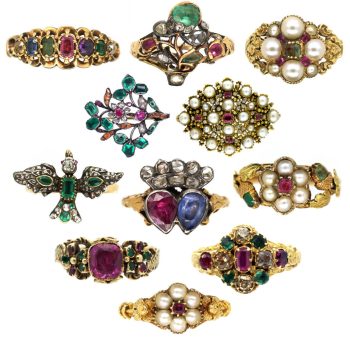
Characteristics of Georgian Jewelry
Georgian jewelry is known for its intricate designs and craftsmanship. Pieces from this era often feature delicate filigree work, colorful gemstones, and intricate metalwork. The jewelry is typically made from gold, silver, or a combination of both, showcasing the skilled artistry of Georgian jewelers.
One of the defining characteristics of Georgian jewelry is its sentimental value. Pieces often incorporate symbols such as hearts, flowers, and birds, representing love, nature, and freedom. Lockets were popular during this time, allowing wearers to keep a cherished memento close to their hearts. Georgian jewelry was not only ornamental but also held deep emotional significance for the wearer.
Another notable feature of Georgian jewelry is its use of specific gemstones. Pieces from this era often feature diamonds, emeralds, rubies, and sapphires, adding a touch of luxury and elegance. The gemstones were typically cut in a way that maximized their brilliance and sparkle, enhancing the overall beauty of the jewelry. Georgian jewelry continues to be highly sought after for its timeless beauty and historical significance.
The Victorian Era Of Antique Jewelry
The Victorian Era of Antique Jewelry spanned from 1837 to 1901 during the reign of Queen Victoria. This period was characterized by a diverse range of jewelry styles, reflecting the societal changes and technological advancements of the time. Jewelry from the Victorian Era often featured intricate designs, incorporating sentimental motifs like hearts, flowers, and snakes symbolizing eternal love and wisdom.
Queen Victoria’s personal influence on fashion and jewelry popularized mourning jewelry, which incorporated black enamel and gemstones like onyx and jet. The discovery of new diamond mines in South Africa led to an increase in diamond jewelry production during this era. Additionally, advances in metalworking techniques allowed for the creation of delicate filigree and intricate engravings on jewelry pieces.
The Victorian Era of Antique Jewelry holds a special place in history for its romantic and sentimental designs. Jewelry from this period often tells a story, reflecting the values and emotions of the time. Today, Victorian-era antique jewelry is highly sought after by collectors and enthusiasts for its craftsmanship, symbolism, and historical significance.

Characteristics of Victorian Jewelry
Victorian jewelry is known for its intricate designs and sentimental value. Crafted during the reign of Queen Victoria from 1837 to 1901, this style of jewelry often features motifs like hearts, flowers, and bows. The use of gemstones such as diamonds, pearls, and turquoise was popular during this era, adding elegance and charm to each piece.
One of the distinctive characteristics of Victorian jewelry is its use of different materials. Pieces were often made with gold, silver, and enamel, creating a colorful and rich look. Hairwork jewelry, where strands of hair were woven into intricate designs, was also common during this period, symbolizing remembrance and sentimentality.
Victorian jewelry reflects the romantic and sentimental values of the era, making it highly sought after by collectors and enthusiasts today. Whether it’s a delicate locket containing a loved one’s portrait or a stunning gemstone ring, each piece tells a story and captures the essence of a bygone era.
The Edwardian Era Of Antique Jewelry
The Edwardian Era of Antique Jewelry, spanning from 1901 to 1910, was characterized by exquisite and delicate pieces. Jewelry during this period was influenced by King Edward VII’s love for luxury and elegance. The use of platinum became popular, allowing for intricate designs with diamonds and other gemstones.
This era marked a shift towards lighter and more feminine jewelry designs. Pieces were often adorned with lace-like filigree work, intricate patterns, and delicate milgrain detailing. Popular gemstones included diamonds, pearls, and colored stones like sapphires and emeralds, reflecting the romantic and ethereal aesthetic of the time.
The Edwardian Era of Antique Jewelry symbolized a time of sophistication and refinement. Pieces from this period are highly sought after for their craftsmanship and timeless beauty. Today, owning a piece of Edwardian jewelry is not only a fashion statement but also a connection to a bygone era of elegance and grace.

Characteristics of Edwardian Jewelry
Edwardian jewelry is characterized by its delicate and intricate designs, often featuring lace-like patterns and filigree work. The pieces from this era are known for their use of platinum, diamonds, and colored gemstones such as sapphires, emeralds, and rubies. Edwardian jewelry reflects the elegant and feminine style of the early 20th century.
One of the key features of Edwardian jewelry is its focus on light and airy designs, incorporating motifs inspired by nature such as garlands, bows, and ribbons. The use of openwork and millegrain detailing gives these pieces a light and ethereal quality. Edwardian jewelry is also characterized by the use of pearls, often combined with diamonds to create a soft and romantic look.
In addition to the intricate designs and use of precious materials, Edwardian jewelry often includes elements such as bows, tassels, and lace-like patterns. These pieces were popular during the reign of King Edward VII and are highly sought after by collectors and enthusiasts today for their timeless beauty and craftsmanship.
The Art Nouveau Era Of Antique Jewelry
The Art Nouveau era emerged in the late 19th century and lasted until the early 20th century. It was characterized by intricate designs inspired by natural elements such as flowers, insects, and curved lines. Art Nouveau jewelry often featured colorful gemstones like opals, pearls, and enamel work, set in delicate settings. This era marked a departure from the rigid designs of the Victorian era, embracing a more fluid and organic style.
Art Nouveau jewelry was a reflection of the broader artistic movement of the time, which sought to break away from traditional forms and embrace innovation and creativity. Artists and jewelers during this period aimed to create pieces that were not only beautiful but also conveyed a sense of harmony with nature. The use of asymmetrical designs, flowing lines, and motifs from the natural world set Art Nouveau jewelry apart from the styles that came before it.
The Art Nouveau era of antique jewelry was a significant period in the history of jewelry design, influencing future movements and styles. Its emphasis on craftsmanship, creativity, and connection to nature continues to inspire jewelry makers and collectors to this day. The beauty and artistry of Art Nouveau pieces serve as a reminder of a time when jewelry was not just an accessory, but a work of art in its own right.
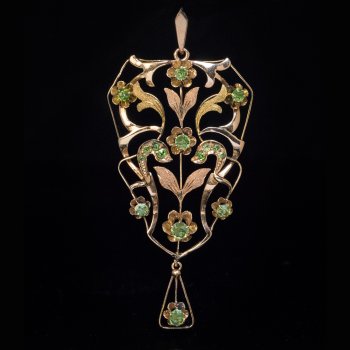
Characteristics of Art Nouveau Jewelry
Art Nouveau jewelry is known for its intricate designs and nature-inspired motifs. Characterized by flowing lines, curves, and asymmetrical shapes, this style emerged in the late 19th century and was popular until the early 20th century. Art Nouveau jewelry often features materials such as enamel, pearls, and colored gemstones, reflecting the emphasis on craftsmanship and artistic expression.
One of the key characteristics of Art Nouveau jewelry is its focus on symbolism and storytelling. Many pieces incorporate symbols like flowers, insects, and mythical creatures, conveying deeper meanings and emotions. The use of these symbols adds a layer of complexity and intrigue to the jewelry, making each piece unique and captivating. Art Nouveau artists sought to create pieces that not only adorned the body but also stirred the imagination and sparked conversations.
In addition to its symbolic elements, Art Nouveau jewelry is also known for its innovative techniques and attention to detail. From delicate enamel work to intricate metalwork, artisans of this period pushed the boundaries of traditional jewelry-making. The result is a style that is both elegant and bold, with designs that continue to inspire and captivate jewelry enthusiasts around the world.
The Art Deco Era Of Antique Jewelry
The Art Deco Era, spanning from the 1920s to the 1930s, was characterized by geometric shapes, bold colors, and intricate designs. Jewelry from this period often featured diamonds, sapphires, emeralds, and rubies set in platinum. The Art Deco movement influenced not only jewelry but also architecture, fashion, and art during the interwar period.
Art Deco jewelry symbolized modernity, luxury, and sophistication. It reflected the societal shift towards embracing technology and innovation. The clean lines and symmetrical patterns of Art Deco pieces represented a departure from the ornate and intricate designs of previous eras. Jewelry became more streamlined and sleek, mirroring the changing attitudes of the time.
Today, Art Deco jewelry remains highly sought after for its timeless elegance and historical significance. Collectors and enthusiasts appreciate the craftsmanship and attention to detail that went into creating these exquisite pieces. The Art Deco Era continues to inspire contemporary designers. It also serves as a testament to a pivotal period in art and design history.
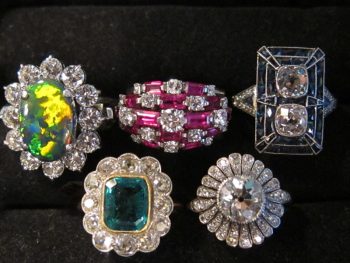
Characteristics of Art Deco Jewelry
Art Deco jewelry is known for its geometric shapes, bold colors, and intricate designs. This style emerged in the 1920s and 1930s, reflecting the glamour and sophistication of the era. Common materials used in Art Deco jewelry include diamonds, emeralds, sapphires, and rubies, often set in platinum or white gold.
One distinctive feature of Art Deco jewelry is the use of symmetry and angular forms. Pieces are often characterized by sharp lines, chevron patterns, and geometric motifs. The style is influenced by various artistic movements. This included Cubism, Bauhaus, and Egyptian art, resulting in a unique blend of modernity and elegance.
Art Deco jewelry remains popular today for its timeless appeal and vintage charm. Collectors and enthusiasts appreciate the craftsmanship and attention to detail found in these pieces. Whether you’re drawn to the bold colors or the striking designs, Art Deco jewelry continues to captivate with its enduring beauty and artistic flair.
The Retro Era Of Antique Jewelry
The Retro Deco Era of Jewelry, spanning from the 1920s to the 1940s, was characterized by bold geometric shapes, intricate designs, and the use of colorful gemstones. This era was heavily influenced by the Art Deco movement, which emphasized modernity and luxury. Jewelry pieces from this period often featured platinum, diamonds, sapphires, and rubies, reflecting the opulence and glamour of the time.
During the Retro Deco Era, jewelry became a symbol of status and sophistication. Pieces were designed to make a statement and were often worn to complement the elegant fashion trends of the time. Brooches, cocktail rings, and bracelets were popular choices, with designs inspired by Hollywood glamour and the escapism of the era.
Overall, the Retro Deco Era of Jewelry marked a significant shift in design aesthetics, embracing boldness and extravagance. Today, these vintage pieces are highly sought after by collectors and enthusiasts for their unique blend of artistry and historical significance.
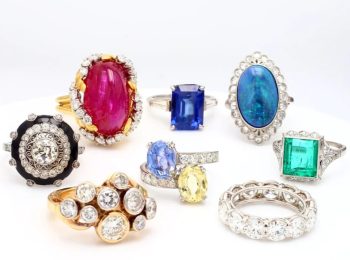
Characteristics of Retro Jewelry
Retro jewelry is known for its unique characteristics that set it apart from modern designs. One key feature of retro jewelry is its bold and extravagant style, often incorporating large gemstones and intricate metalwork. This jewelry style emerged in the mid-20th century and reflects the glamour and opulence of that era.
Another defining characteristic of retro jewelry is its use of colorful gemstones such as rubies, sapphires, and emeralds. These vibrant stones were often set in elaborate designs that exuded luxury and sophistication. Retro jewelry pieces are statement pieces that command attention and add a touch of vintage charm to any outfit.
Moreover, retro jewelry often features geometric shapes and bold motifs inspired by nature and architecture. These designs showcase the creativity and craftsmanship of the era. This makes retro jewelry a timeless and elegant choice for those who appreciate vintage aesthetics. Whether it’s a cocktail ring or a statement necklace, retro jewelry pieces continue to captivate collectors and fashion enthusiasts alike.
